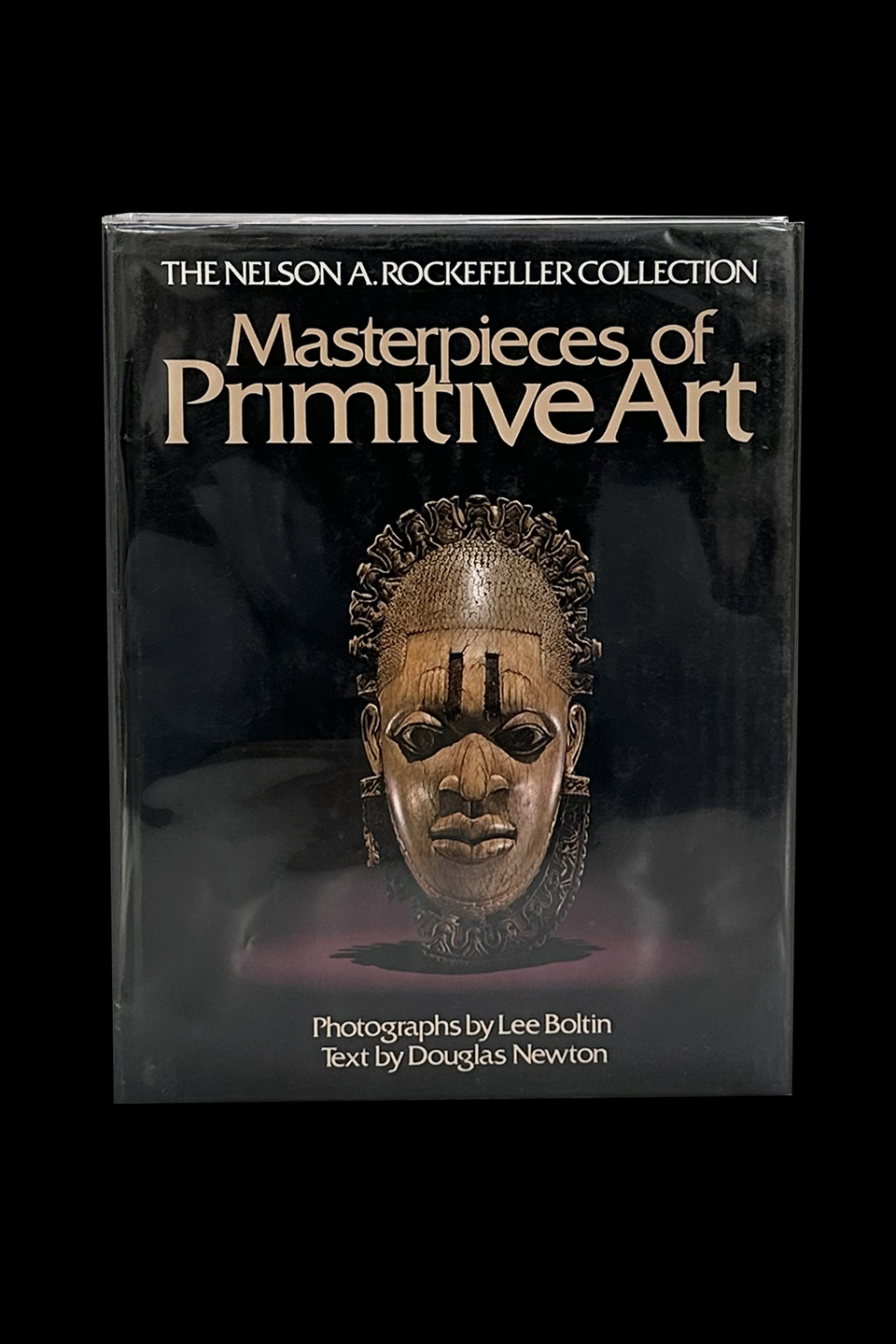
by Douglas Newton (Author), Lee Boltin (Photographer), 254 photos!, Nelson D. Rockefeller (Introduction), Andre Malraux (Foreword)
This collection from Africa, Oceania, and pre-Columbian America features masks, vessels, and jewelry worked in precious stones and metals.
The artistic achievements of the world's primitive societies have never been so fully revealed and superbly portrayed as in this extraordinary volume that celebrates -and shares with us- the peerless collection of Nelson A. Rockefeller. Amassed with passion and discrimination through almost fifty years, the Rockefeller Collection encompasses every source of primitive art from Black Africa to the islands of Oceania to Precolumbian America as well as the many Indian cultures of the northern continent.
Here are 254 paramount works of art in all their splendor and visual daring. In Lee Boltin's sumptuous color photographs, pictures that are themselves works of art, we discover the astonishing scope of the Rockefeller Collection -the finely wrought Mayan and Aztec artifacts that amazed the conquistadors; a cloak of feathers as splendid as jewels; mysterious masks fashioned for ceremonial use; statues carved in stone and wood; brilliant textiles: ritual objects of gold, silver, bronze, jade, cloth, shells- everyone a masterpiece displaying an aesthetic sophistication that belies the very notion of "primitive."
And the book itself offers the layman a fascinating and comprehensive introduction to the glories of this art. Magnificently designed and printed, it has been organized into four major categories: faces, human figures, animals, and "abstractions." Individual captions for each object enhance the reader's understanding and appreciation of the accomplishment of these anonymous artists and the cultural contexts in which they worked.
The artistic achievements of the world's primitive societies have never been so fully revealed and superbly portrayed as in this extraordinary volume that celebrates -and shares with us- the peerless collection of Nelson A. Rockefeller. Amassed with passion and discrimination through almost fifty years, the Rockefeller Collection encompasses every source of primitive art from Black Africa to the islands of Oceania to Precolumbian America as well as the many Indian cultures of the northern continent. Here are 254 paramount works of art in all their splendor and visual daring. In Lee Boltin's sumptuous color photographs, pictures that are themselves works of art, we discover the astonishing scope of the Rockefeller Collection -the finely wrought Mayan and Aztec artifacts that amazed the conquistadors; a cloak of feathers as splendid as jewels; mysterious masks fashioned for ceremonial use; statues carved in stone and wood; brilliant textiles: ritual objects of gold, silver, bronze, jade, cloth, shells- everyone a masterpiece displaying an aesthetic sophistication that belies the very notion of "primitive." And the book itself offers the layman a fascinating and comprehensive introduction to the glories of this art. Magnificently designed and printed, it has been organized into four major categories: faces, human figures, animals, and "abstractions." Individual captions for each object enhance the reader's understanding and appreciation of the accomplishment of these anonymous artists and the cultural contexts in which they worked.
The text by Douglas Newton, Chairman of the Department of Primitive Art at the Metropolitan Museum of Art, gives a fascinating history of Western civilization's gradually evolving attitudes toward primitive art -from the early explorers' voyages of discovery and conquest through the more enlightened scientific observations of Captain Cook to the most recent developments in our knowledge and investigations. And Mr. Newton employs his unique expertise to illuminate the archetypal motifs that have captured the imagination of primitive artists across continents and millennia.
Nelson Rockefeller's own introduction gives us the story of the decades of collecting that resulted in this unsurpassed assemblage of primitive art; how he was first exposed to what was then considered a daring aesthetic taste by his mother, an adventurous and discriminating amateur; how he acquired his first prized objects during his honeymoon trip around the world; how, always, he has pursued the finest artifacts. Here too is his account of his struggle over the years to persuade the art establishment of the significance of primitive art, an effort leading first to his founding of the Museum of Primitive Art in New York in 1957, and culminating in the presentation of his entire collection to New York's Metropolitan Museum, where it will be housed in the new Michael C. Rockefeller Memorial Wing, to be opened in 1979.
André Malraux, in a piece written especially for this book, and posthumously published here for the first time, sums up the ways in which primitive art has captured the attention of European painters and sculptors since the early years of this century, when these artists were seeking new freedom of form and expression in their own work; and he details the enormous impact of primitive art on the modern imagination.